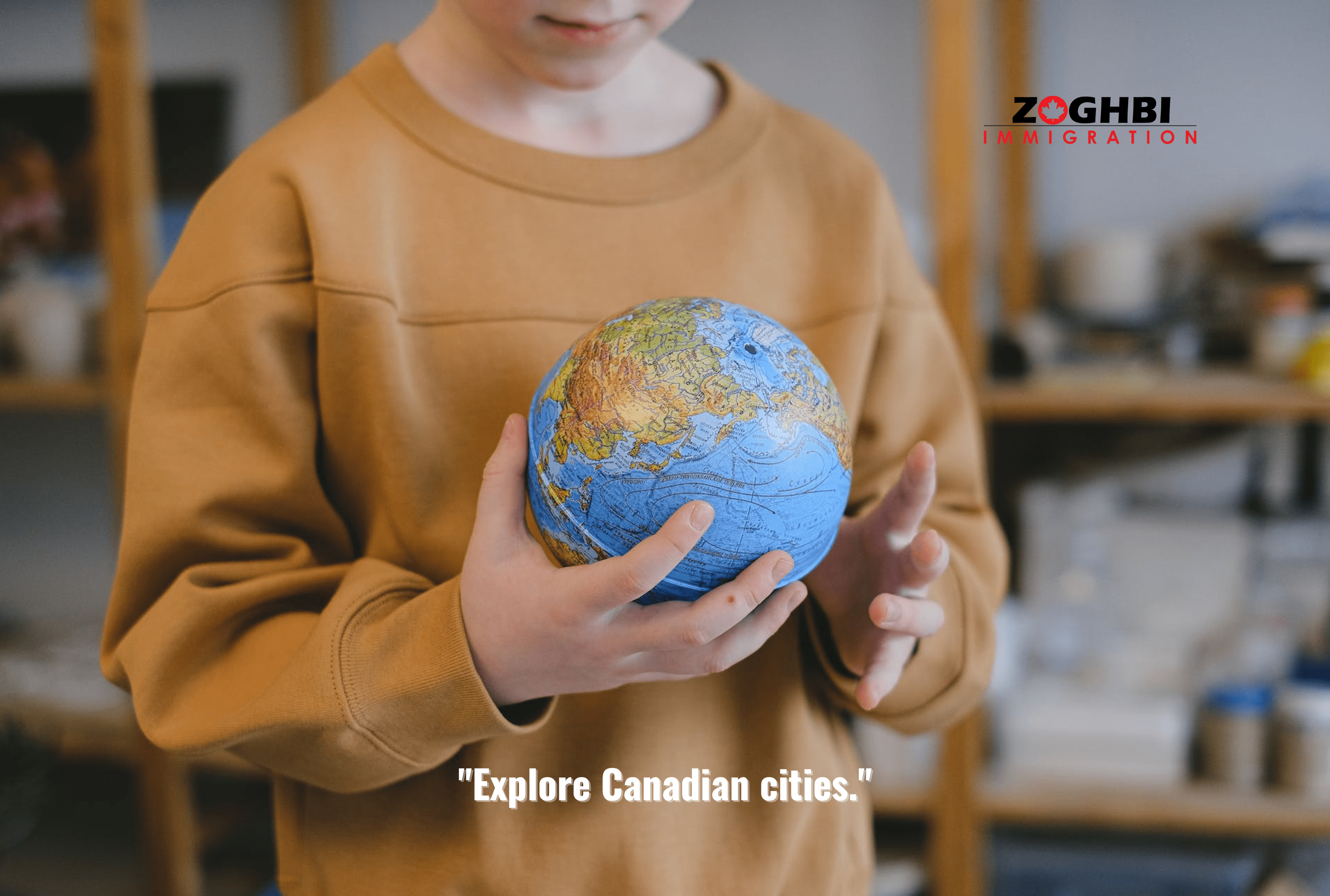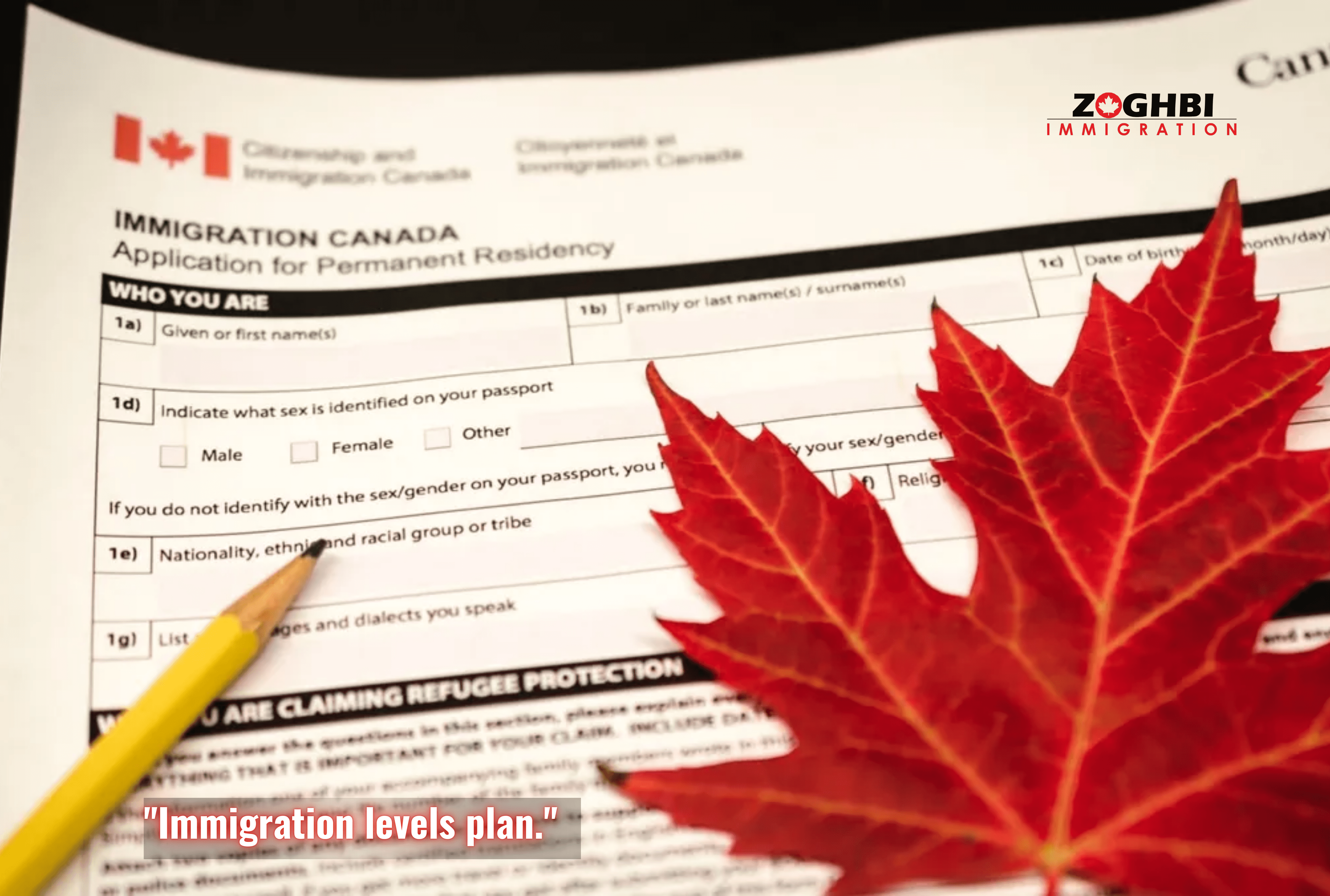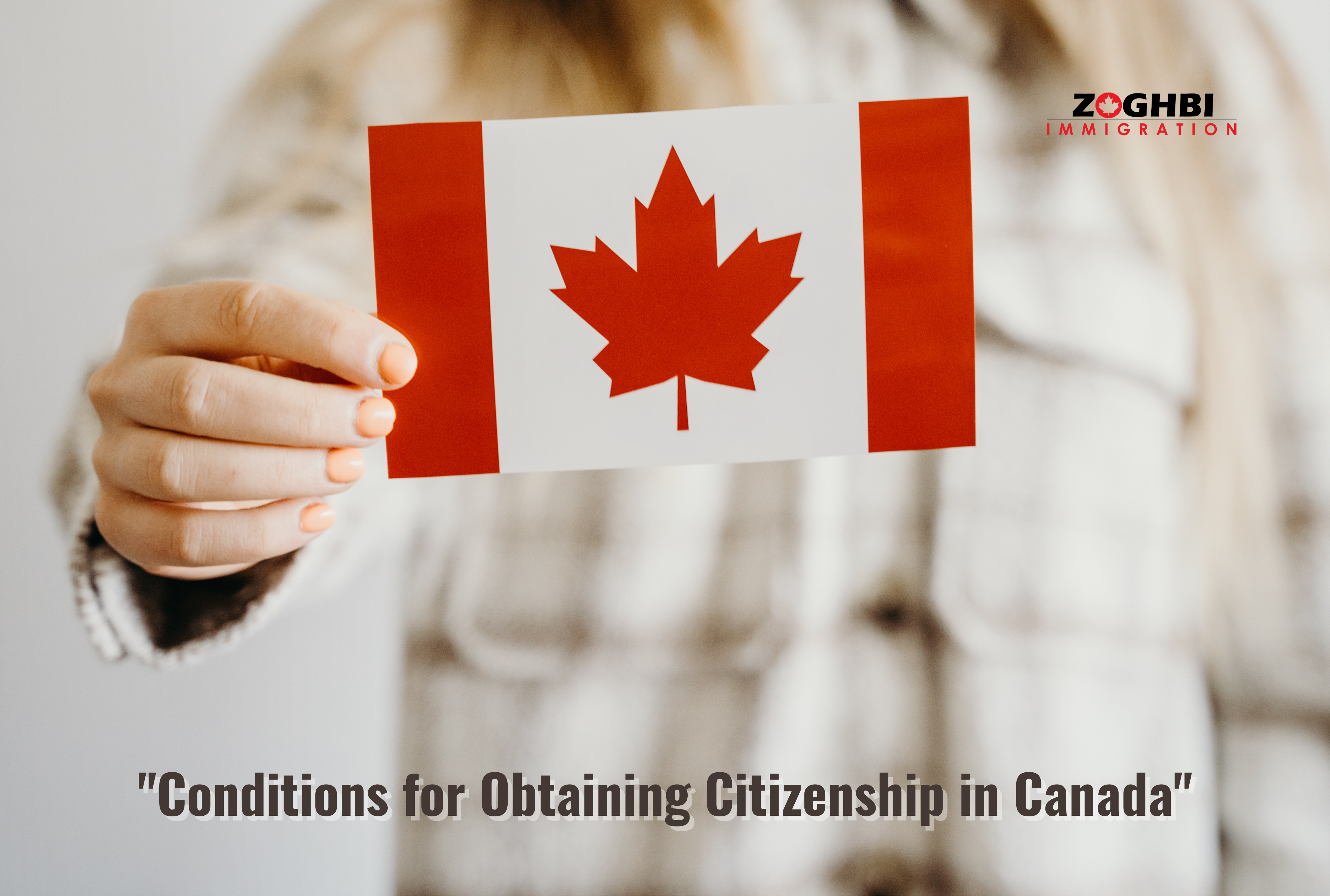Immigration levels plan
خطة مستويات الهجرة
المقال مترجم للعربية بالأسفل
Each year, IRCC releases an Immigration Levels Plan to set targets for the number of accepted permanent residents arriving in Canada annually over the next three years.
Canada has unveiled its immigration levels plan for the years 2024 to 2026, maintaining its current immigration targets. The plan sets a goal of admitting 485,000 new immigrants in 2024, followed by an annual target of 500,000 immigrants for 2025 and 2026. These figures align with the previously outlined goals under the 2023-2025 plan. The latest release includes detailed updates on the distribution of immigrant admissions across various categories and programs throughout the plan’s duration.
These goals are further broken down by category, including Express Entry candidates.
For example, IRCC plans to receive 110,770 immigrants through Express Entry in 2024 and 117,550 in both 2025 and 2026. These numbers include main applicants who receive Express Entry ITAs, as well as their eligible partners and dependents who can add to their permanent residency Applications.
To ensure that IRCC achieves these goals, it needs to continually evaluate the number of permanent residence applications in the processing queue. If there are sufficient applications for IRCC to meet its goals for the current and next year, it may not be necessary for the Department to issue any further IPAs. If there are not enough applications in the processing queue, IRCC will likely hold more draws or issue a greater number of ITAs.
When deciding how many ITAs to issue in terms of targets, IRCC considers both the last year and the current year because it takes six months to process an Express Entry candidate’s final application. This means, for example, that international trade agreements issued in the latter half of 2023 would likely result in the permanent resident completing his or her landing in 2024.
- Factors affecting immigration goals:
Canada’s immigration goals depend on several factors, including:
- Economic needs: Canada focuses on attracting immigrants who have the skills and abilities its economy needs.
- Diversity: Canada is committed to building a diverse and sustainable society.
- Community needs: Canada also considers the needs of its local communities when setting immigration goals.
Future Immigration Prospects: Canada is expected to continue receiving many immigrants in the coming years. The Canadian government expects the number of immigrants to reach 1.2 million by 2026.
- Challenges facing immigration:
Canada faces several challenges about immigration, including:
- Slow processing of applications: Permanent residency applications in Canada can take years to process.
- High costs of living: The cost of living in Canada can be high for immigrants.
- Discrimination: Immigrants can face discrimination in Canada.
Some statistics about immigration to Canada:
- Most common countries for immigrants to Canada: In 2022, the most common countries for immigrants to Canada were from India, China, and the Philippines.
- The most common sectors for immigrants in Canada: Most immigrants in Canada work in the health, education, and social services sectors.
Canada is currently adopting a new approach to enhance its immigration processes, unveiling a strategy concurrently with the immigration levels plan for the period 2024-2026. On October 31st, Mark Miller, the Minister of Immigration, acknowledged deficiencies in the national immigration system and presented a revised strategy aimed at modernizing it.
The strategy, titled “Immigration System for Canada’s Future,” focuses on three key objectives:
- Crafting a more appealing entry process for immigrants.
- Aligning immigration with the country’s labor market requirements.
- Formulating a comprehensive and cooperative development strategy.
The Immigration, Refugees, and Citizenship Canada (IRCC) commit to improving the overall experience for users, making it more acceptable and straightforward. Additionally, the IRCC plans to adjust Canadian immigration policies to better match the country’s skills and work necessities.
Finally, the IRCC intends to establish a unified plan with federal, provincial, and municipal governments. This plan aims to ensure Canada’s capacity to provide sufficient housing, healthcare, and infrastructure to support the increasing numbers of immigrants.
Since the late 1980s, Canada has gradually increased the number of immigrants it welcomes. Initially, the Canadian government did not give high priority to long-term immigration planning, often setting goals based on immediate economic conditions.
In 1984, immigration numbers were relatively low, with fewer than 90,000 newcomers. However, anticipating labor shortages, the conservative government in the late 1980s raised immigration targets to 250,000 over the following eight years.
The subsequent Liberal government, elected in 1993, not only supported but also enhanced these goals. The major change was an increased focus on economically skilled immigrants, particularly during recessions, with a proportional reduction in family and humanitarian immigration.
Annual immigration numbers reached nearly 260,000 during the Liberals’ tenure until 2015 when the current Liberal administration, led by Justin Trudeau, escalated these figures to 300,000 and then to 340,000 before COVID-19.
Remarkably, in 2021, amid the pandemic, Canada set a new record by accepting 405,000 new permanent residents. However, rising living costs and housing shortages somewhat dampened Canadian enthusiasm for immigration.
Nevertheless, with a large portion of the workforce nearing retirement and a declining birth rate posing challenges, the Immigration, Refugees, and Citizenship Canada (IRCC) adheres to high immigration goals due to the continuous demand for skilled labor. Newcomers have become a crucial element in Canada’s demographic growth, contributing to 98% of the population increase according to the latest figures.
In conclusion, you may want to emphasize key points discussed, such as the goals outlined in the plan, the economic and social impacts of immigration, and how the plan addresses challenges and opportunities. Highlight the importance of strategic immigration planning in driving economic growth, innovation, and cultural diversity. Additionally, it stresses the need for continuous assessment and flexibility to adapt to changing global circumstances.
تُصدر الهجرة والمواطنة الكندية كل عام خطة مستويات الهجرة لتحديد الأهداف لعدد المقبولين من المقيمين الدائمين الذين سيصلون إلى كندا سنويًا على مدار السنوات الثلاث القادمة.
كشفت كندا عن خطة مستويات الهجرة للأعوام من 2024 إلى 2026، حيث تستمر في الالتزام بأهداف الهجرة الحالية. تحدد الخطة هدفًا لاستقبال 485 ألف وافد جديد في عام 2024، يليه هدف سنوي قدره 500 ألف مهاجر لكل من الأعوام 2025 و2026. تتوافق هذه الأرقام مع الأهداف المسبقة المحددة بموجب خطة 2023-2025. يتضمن الإصدار الأخير تحديثات مفصلة حول توزيع قبول المهاجرين عبر مختلف الفئات والبرامج طوال مدة الخطة.
يتم تقسيم هذه الأهداف بشكل أكبر حسب الفئة، بما في ذلك مرشحي برنامج الدخول السريع.
على سبيل المثال، تخطط الهجرة والمواطنة الكندية لاستقبال 110,770 مهاجرًا عبر برنامج الدخول السريع في عام 2024 و117,550 في كل من عامي 2025 و2026. تشمل هذه الأرقام المتقدمين الرئيسيين الذين يحصلون على دعوة للتقديم لبرنامج الدخول السريع، بالإضافة إلى شركائهم المؤهلين ومعاليهم الذين يمكنهم إضافتهم إلى إقامتهم الدائمة.
للتأكد من أن الهجرة والمواطنة الكندية تحقق هذه الأهداف، فإنها تحتاج إلى التقييم المستمر لعدد طلبات الإقامة الدائمة في قائمة انتظار المعالجة. إذا كانت هناك طلبات كافية للهجرة والمواطنة الكندية لتحقيق أهدافها للعام الحالي والعام المقبل، فقد لا يكون من الضروري أن يصدر القسم أي اتفاقيات ترويج دولية أخرى. إذا لم يكن هناك ما يكفي من الطلبات في قائمة انتظار المعالجة، فمن المرجح أن تحتفظ الهجرة والمواطنة الكندية بمزيد من السحوبات أو تصدر عددًا أكبر من دعوات التقديم.
عند اتخاذ قرار بشأن عدد ITAs التي سيتم إصدارها من حيث الأهداف، تأخذ الهجرة والمواطنة الكندية في الاعتبار كلاً من العام الماضي والعام الحالي لأنه يستغرق ستة أشهر لمعالجة الطلب النهائي لمرشح برنامج الدخول السريع. وهذا يعني، على سبيل المثال، أن اتفاقيات التجارة الدولية الصادرة في النصف الأخير من عام 2023 من المرجح أن تؤدي إلى إكمال المقيم الدائم هبوطه في عام 2024.
- العوامل التي تؤثر على أهداف الهجرة:
تعتمد أهداف الهجرة في كندا على عدد من العوامل، بما في ذلك:
-
- الاحتياجات الاقتصادية: تركز كندا على جذب المهاجرين الذين لديهم المهارات والقدرات التي يحتاجها اقتصادها.
- التنوع: تلتزم كندا ببناء مجتمع متنوع ومستدام.
- احتياجات المجتمع: تأخذ كندا في الاعتبار أيضًا احتياجات مجتمعاتها المحلية عند وضع أهداف الهجرة.
- آفاق الهجرة المستقبلية: من المتوقع أن تستمر كندا في استقبال عدد كبير من المهاجرين في السنوات القادمة. تتوقع الحكومة الكندية أن يصل عدد المهاجرين إلى 1.2 مليون بحلول عام 2026.
- التحديات التي تواجه الهجرة:
تواجه كندا عددًا من التحديات فيما يتعلق بالهجرة، بما في ذلك:
-
- المعالجة البطيئة للطلبات: يمكن أن تستمر معالجة طلبات الإقامة الدائمة في كندا لسنوات.
- ارتفاع تكاليف المعيشة: يمكن أن تكون تكاليف المعيشة في كندا مرتفعة بالنسبة للمهاجرين.
- التمييز: يمكن أن يواجه المهاجرون التمييز في كندا.
بعض الإحصائيات حول الهجرة إلى كندا:
- البلدان الأكثر شيوعًا للمهاجرين إلى كندا: في عام 2022، كان المهاجرون الأكثر شيوعًا إلى كندا من الهند والصين والفلبين.
- القطاعات الأكثر شيوعًا للمهاجرين في كندا: يعمل معظم المهاجرين في كندا في قطاعات الصحة والتعليم والخدمات الاجتماعية.
تتبنى كندا نهجًا جديدًا لتعزيز عمليات الهجرة لديها
تعمل كندا على تطوير استراتيجية جديدة لتعزيز إطار الهجرة الخاص بها، والذي تم الكشف عنه بالتزامن مع خطة مستويات الهجرة للفترة 2024-2026. في الحادي والثلاثين من أكتوبر/تشرين الأول، أقر مارك ميلر، وزير الهجرة، بأوجه القصور القائمة في نظام الهجرة الوطني، بينما قدم استراتيجية منقحة تهدف إلى تحديثه.
وترتكز الاستراتيجية التي تحمل عنوان نظام الهجرة من أجل مستقبل كندا على ثلاثة أهداف أساسية:
- صياغة عملية دخول أكثر جاذبية للمهاجرين.
- مزامنة الهجرة مع متطلبات سوق العمل في البلاد.
- صياغة استراتيجية تنمية شاملة وتعاونية.
تلتزم إدارة الهجرة واللاجئين والمواطنة الكندية (IRCC) بتحسين التجربة الشاملة لمستخدميها، وجعلها أكثر قبولًا ومباشرة.
علاوة على ذلك، تخطط IRCC لضبط سياسات الهجرة الكندية لتتناسب بشكل أفضل مع مهارات البلاد وضروريات العمل.
وأخيرًا، تعتزم IRCC وضع خطة موحدة مع الحكومات الإتحادية والإقليمية والبلدية. تهدف هذه الخطة إلى ضمان قدرة كندا على توفير السكن والرعاية الصحية والبنية التحتية الكافية لدعم أعداد المهاجرين المتزايدة.
ابتداءً من أواخر الثمانينيات، بدأت كندا في زيادة تدريجية في عدد المهاجرين الذين تستقبلهم
منذ أواخر الثمانينات، قامت كندا بتعديل سياساتها المتعلقة بالهجرة تدريجيًا للاستجابة للاحتياجات الاقتصادية. في البداية، لم تعط الحكومة الكندية أولوية كبيرة للتخطيط للهجرة على المدى الطويل، بل كانت تحدد في كثير من الأحيان أهدافًا بناءً على الظروف الاقتصادية المباشرة.
في عام 1984، كانت أعداد المهاجرين منخفضة نسبيًا، حيث كان عدد الوافدين الجدد أقل من 90 ألفًا. ومع ذلك، توقعت الحكومة التي يقودها المحافظون في أواخر الثمانينات، توقعًا لنقص العمالة، رفع أهداف الهجرة إلى 250 ألفًا على مدى السنوات الثماني اللاحقة.
ولم تنجح الحكومة الليبرالية اللاحقة، المنتخبة في عام 1993، في دعم هذه الأهداف فحسب، بل عملت أيضًا على تعزيزها. كان التغيير الرئيسي هو التركيز المتزايد على المهاجرين من الطبقة الاقتصادية، خاصة خلال فترات الركود، مع تقليل الهجرة العائلية والإنسانية بشكل متناسب.
وصلت أعداد المهاجرين السنوية إلى ما يقرب من 260,000 في عهد الليبراليين حتى عام 2015 عندما قامت الإدارة الليبرالية الحالية، مع جاستن ترودو كرئيس للوزراء، بتصعيد هذه الأرقام إلى300,000 ثم إلى 340,000 قبل كوفيد-19.
ومن اللافت للنظر أنه في عام 2021، وسط الوباء، سجلت كندا رقمًا قياسيًا جديدًا بقبول 405000 مقيم دائم جديد. وعلى الرغم من ذلك، أدى ارتفاع تكاليف المعيشة ونقص المساكن إلى إضعاف حماس الجمهور الكندي للهجرة إلى حد ما.
ومع ذلك، مع التقاعد الوشيك لشريحة كبيرة من العمال وانخفاض معدل المواليد الذي يشكل تحديات، فإن دائرة الهجرة واللاجئين والمواطنة الكندية (IRCC) تتمسك بأهداف الهجرة المرتفعة بسبب الطلب المستمر على العمالة الماهرة. لقد أصبح القادمون الجدد عنصرًا أساسيًا في النمو الديموغرافي في كندا، حيث ساهموا في 98٪ من الزيادة السكانية وفقًا لأحدث الأرقام.
في ختام المقالة، قد ترغب في التأكيد على النقاط الرئيسية التي تمت مناقشتها، مثل الأهداف التي حددتها الخطة، والآثار الاقتصادية والاجتماعية للهجرة، وكيفية تتناول الخطة التحديات والفرص. التفكير في أهمية التخطيط الاستراتيجي للهجرة في دفع النمو الاقتصادي والابتكار والتنوع الثقافي. يمكنك أيضًا تسليط الضوء على الحاجة إلى التقييم المستمر والمرونة للتكيف مع الظروف العالمية المتغيرة.











